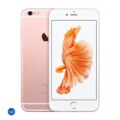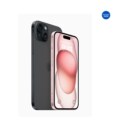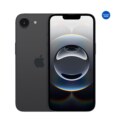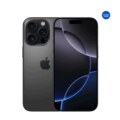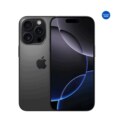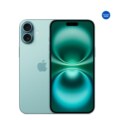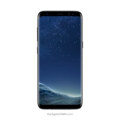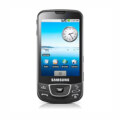Apple iPhone 13








-
Display: 6.1" 1 (170x2532 pixels)
-
Processor: Apple A15 Bionic
-
Rear Camera: 12MP
-
RAM: 4GB
-
Storage: 128GB/256GB/512GB
-
OS: iOS 15, up to iOS 26.1
-
Battery: 3240mAh
PROS
- Excellent dual-camera performance with improved low-light photos
- A15 Bionic chip delivers blazing speed and efficiency
- Noticeably longer battery life than iPhone 12
- Bright and color-accurate OLED display
- Premium build with Ceramic Shield and IP68 rating
- Base storage increased to 128GB
- Tight integration with Apple’s ecosystem
CONS
- 60Hz refresh rate — no ProMotion smoothness
- No major design overhaul from iPhone 12
- No Touch ID — Face ID only
- Average charging speed compared to competitors
- Premium pricing in international markets
Apple iPhone 13 Review – The 2021 Flagship That Perfected the Formula
When Apple unveiled the iPhone 13 in September 2021, it was clear that the tech giant wasn’t aiming for a radical redesign but rather meaningful refinements. The iPhone 13 carried forward the beloved design of the iPhone 12 while improving on performance, camera quality, and battery life. It was Apple’s perfect example of “if it isn’t broken, improve it.”
iPhone 13 Price at Launch
At its 2021 launch, the iPhone 13 started at $799 for the 128GB model. Below is a conversion of the launch price in major currencies from that year:
- United States: $799
- United Kingdom: £779
- Nigeria: ₦328,000 (based on ₦411 per dollar in 2021)
- India: ₹58,700 (based on ₹73.5 per dollar in 2021)
Note: Prices varied slightly due to taxes, import duties, and local retail adjustments.
What’s New Compared to the iPhone 12
The iPhone 13 refined Apple’s previous generation with several subtle but meaningful updates:
- The display notch was 20% smaller, offering a cleaner look.
- The dual-camera system now featured larger sensors that capture 47% more light.
- The A15 Bionic chip delivered faster performance and improved power efficiency.
- The battery life increased noticeably thanks to both software optimization and a bigger cell.
- The display remained 6.1 inches Super Retina XDR OLED, maintaining excellent color and brightness.
- New color options included Midnight, Starlight, Blue, Pink, (PRODUCT)RED, and later, Green.
Apple clearly focused on enhancing real-world use, smoother performance, brighter display, and longer battery, without changing the iPhone’s core design identity.
Design and Build
The iPhone 13 retained the flat-edge aluminum frame and Ceramic Shield front introduced with the iPhone 12. Its diagonal dual-camera arrangement stood out visually and served a technical purpose, accommodating the larger camera sensors.
At 174 grams and dimensions of 146.7 × 71.5 × 7.7 mm, the phone struck a balance between display size and comfortable one-handed use. The IP68 water and dust resistance rating remained, making it durable for everyday use.
The phone’s design language was modern, minimal, and unmistakably Apple, premium feel, precise finish, and flawless build quality.
Display Quality
Apple equipped the iPhone 13 with a 6.1-inch Super Retina XDR OLED panel boasting a 2532 × 1170 resolution and 460 ppi density. The display brightness improved over the iPhone 12, hitting up to 800 nits typical brightness and even higher for HDR content.
Colors are vivid and natural, blacks are deep, and visibility under sunlight is superb. While the refresh rate remained at 60Hz, the smoothness and clarity were still impressive for most users, though the Pro models’ 120Hz screens were reserved for those seeking ultra-fluid motion.
Performance: A15 Bionic Powerhouse
The A15 Bionic chip made the iPhone 13 one of the fastest smartphones in 2021. Built with a 5-nanometer process, it offered a 6-core CPU, 4-core GPU, and 16-core Neural Engine, enhancing not just gaming and multitasking but also camera processing and energy efficiency.
Everyday tasks felt instantaneous. Whether editing videos, playing graphics-heavy games, or switching between apps, the iPhone 13 stayed cool and smooth. Apple’s reputation for chip dominance continued, easily outperforming Android competitors released in the same year.
Camera System: Small Phone, Big Upgrade
The iPhone 13’s dual-camera system received one of its biggest overhauls in years. The main wide lens featured 1.7 µm pixels and a f/1.6 aperture, allowing 47% more light intake than its predecessor. The ultra-wide lens also improved in low-light capture and edge clarity.
Photography
The results were stunning, sharper images, better dynamic range, and enhanced low-light shots. Night Mode performed beautifully across lenses, and Smart HDR 4 made faces and backgrounds look balanced even in tricky lighting.
Videography
Apple’s focus on video was evident. The Cinematic Mode was introduced, allowing users to create shallow-depth-of-field videos with automatic focus transitions. Combined with Dolby Vision HDR and 4K at 60fps recording, the iPhone 13 became a mini professional studio in your pocket.
Battery Life and Charging
Battery life was a major win for the iPhone 13. It came with a 3,327 mAh battery, a solid increase over the iPhone 12. Apple claimed up to 2.5 hours longer battery life than its predecessor, and real-world tests supported this.
With typical use, users could easily get through a full day and more. Charging options included:
- 20W fast charging (50% in about 30 minutes)
- 15W MagSafe wireless charging
- 7.5W Qi wireless charging
While not the fastest charging phone on the market, Apple prioritized battery longevity and heat management.
Storage Options and Value
Apple finally dropped the 64GB base model and started the iPhone 13 at 128GB, with options going up to 512GB. This made the entry model feel more practical, especially for photographers and videographers.
Considering its improvements and long-term software support, the iPhone 13 offered great value for users wanting a high-end device that would remain relevant for years.
iOS and Ecosystem
The iPhone 13 shipped with iOS 15, bringing features like Focus Mode, Live Text, and FaceTime improvements. But what really makes iPhones stand out is Apple’s ecosystem, seamless syncing with MacBooks, iPads, Apple Watch, and AirPods.
iCloud, iMessage, AirDrop, and Continuity features made everyday digital tasks feel effortless. Apple also guaranteed years of software updates, ensuring the iPhone 13 would stay current well into the late 2020s.
Pros and Cons
Pros
Excellent dual-camera performance with improved low-light photos
A15 Bionic chip delivers blazing speed and efficiency
Noticeably longer battery life than iPhone 12
Bright and color-accurate OLED display
Premium build with Ceramic Shield and IP68 rating
Base storage increased to 128GB
Tight integration with Apple’s ecosystem
Cons
60Hz refresh rate — no ProMotion smoothness
No major design overhaul from iPhone 12
No Touch ID — Face ID only
Average charging speed compared to competitors
Premium pricing in international markets
Should You Buy the iPhone 13?
The Apple iPhone 13 represents refinement done right. It’s not a revolutionary device, but it perfects what already worked. The improvements in battery life, performance, and camera quality make it a truly balanced flagship.
If you’re upgrading from an iPhone 11 or earlier, this is a worthwhile investment. But if you already own an iPhone 12, the differences, while noticeable, may not justify an immediate upgrade, unless you crave better battery life and camera quality.
For users in regions like Nigeria or India, where taxes and import duties raise the cost, the iPhone 13 still stands out for its long-term durability, resale value, and unmatched software longevity.
Conclusion
The iPhone 13 is Apple’s testament to refinement, not reinvention. With enhanced cameras, robust performance, reliable battery life, and timeless design, it remains one of the best smartphones of 2021. For anyone seeking a dependable, premium experience that will stay relevant for years, the iPhone 13 remains a smart choice.
Specs
LAUNCH
| Announced | 2021, September 14 |
| Availability | Available. Released 2021, September 24 |
NETWORK
| 2G Bands | GSM 850 / 900 / 1800 / 1900 CDMA 800 / 1900 |
| 3G Bands | HSDPA 850 / 900 / 1700(AWS) / 1900 / 2100 CDMA2000 1xEV-DO |
| 4G Bands | 1, 2, 3, 4, 5, 7, 8, 12, 13, 17, 18, 19, 20, 25, 26, 28, 30, 32, 34, 38, 39, 40, 41, 42, 46, 48, 66 - A2633, A2634, A2635 1, 2, 3, 4, 5, 7, 8, 11, 12, 13, 14, 17, 18, 19, 20, 21, 25, 26, 28, 29, 30, 32, 34, 38, 39, 40, 41, 42, 46, 48, 66, 71 - A2482, A2631 |
| 5G Bands | 1, 2, 3, 5, 7, 8, 12, 20, 25, 28, 29, 30, 38, 40, 41, 48, 66, 71, 77, 78, 79 Sub6/mmWave - A2633 1, 2, 3, 5, 7, 8, 12, 20, 25, 28, 29, 30, 38, 40, 41, 48, 66, 71, 77, 78, 79, 258, 260, 261 SA/NSA/Sub6/mmWave - A2482 1, 2, 3, 5, 7, 8, 12, 20, 25, 28, 29, 30, 38, 40, 41, 48, 66, 71, 77, 78, 79 SA/NSA/Sub6 - A2631 1, 2, 3, 5, 7, 8, 12, 20, 25, 28, 30, 38, 40, 41, 48, 66, 77, 78, 79 SA/NSA/Sub6 - A2634, A2635 |
| Speed | HSPA, LTE, 5G, EV-DO Rev.A 3.1 Mbps |
| Technology | GSM / CDMA / HSPA / EVDO / LTE / 5G |
DESIGN
| Measurements | 146.7 x 71.5 x 7.7 mm (5.78 x 2.81 x 0.30 in) |
| Weight | 174 g (6.14 oz) |
| Build | Glass front, glass back, aluminum frame |
| SIM | · Nano-SIM + eSIM · Nano-SIM + Nano-SIM IP68 dust tight and water resistant (immersible up to 6m for 30 min) Apple Pay (Visa, MasterCard, AMEX certified) |
DISPLAY
| Type | Super Retina XDR OLED, HDR10, Dolby Vision, 800 nits (HBM), 1200 nits (peak) |
| Size | 6.1 inches, 90.2 cm2 (~86.0% screen-to-body ratio) |
| Resolution | 1170 x 2532 pixels, 19.5:9 ratio (~460 ppi density) |
| Protection | Ceramic Shield glass |
PLATFORM
| OS | iOS 15, upgradable to iOS 26.1 |
| Chipset | Apple A15 Bionic (5 nm) |
| CPU | Hexa-core (2x3.23 GHz Avalanche + 4x1.82 GHz Blizzard) |
| GPU | Apple GPU (4-core graphics) |
MEMORY
| Card Slot | No |
| Internal | 128GB 4GB RAM, 256GB 4GB RAM, 512GB 4GB RAM NVMe |
REAR CAMERA
| Dual | 12 MP, f/1.6, 26mm (wide), 1/1.9", 1.7µm, dual pixel PDAF, sensor-shift OIS 12 MP, f/2.4, 120˚, 13mm (ultrawide), 1/3.4", 1.0µm |
| Features | Dual-LED dual-tone flash, HDR (photo/panorama) |
| Video | 4K@24/25/30/60fps, 1080p@25/30/60/120/240fps, HDR, Dolby Vision HDR (up to 60fps), stereo sound rec. |
SELFIE CAMERA
| Single | 12 MP, f/2.2, 23mm (wide), 1/3.6", 1.0µm SL 3D, (depth/biometrics sensor) |
| Features | HDR |
| Video | 4K@24/25/30/60fps, 1080p@25/30/60/120fps, gyro-EIS |
SOUND
| Loudspeaker | Yes, with stereo speakers |
| 3.5mm Jack | No |
COMMUNICATION
| WLAN | Wi-Fi 802.11 a/b/g/n/ac/6, dual-band, hotspot |
| Bluetooth | 5.0, A2DP, LE |
| Positioning | GPS, GLONASS, GALILEO, BDS, QZSS |
| NFC | Yes |
| Radio | No |
| USB | Lightning, USB 2.0 |
FEATURES
| Sensors | Face ID, accelerometer, gyro, proximity, compass, barometer Ultra Wideband (UWB) support |
BATTERY
| Kind | Li-Ion 3240 mAh (12.41 Wh) |
| Charging | Wired, PD2.0, 50% in 30 min 15W wireless (MagSafe) 15W wireless (Qi2) - requires iOS 17.2 update |
OTHERS
| Colors | Starlight, Midnight, Blue, Pink, Red, Green |
| Models | A2633, A2482, A2631, A2634, A2635, iphone14,5 |
| SAR | 1.18 W/kg (head) 1.19 W/kg (body) |
| SAR EU | 0.99 W/kg (head) 0.98 W/kg (body) |
PRICE
| Nigeria | ₦328,000 |
| UK | £779 |
| USA | $799 |
| India | ₹58,700 |
EU LABEL
Reviews
Disclaimer Note
The reviews, opinions, and information shared on this blog are based on personal experiences, research, and available product details at the time of writing. While we strive to provide accurate and up-to-date information, we cannot guarantee that all specifications, prices, or features remain current.


